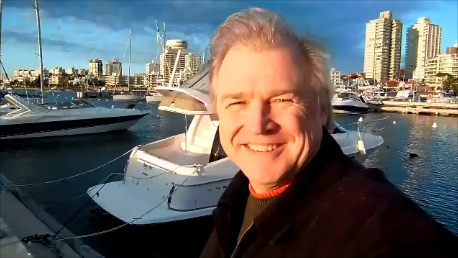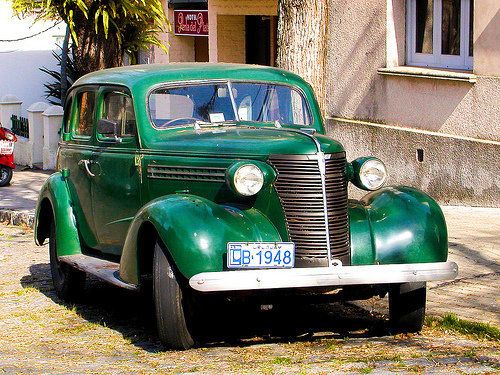This article comes to us courtesy of InternationalLiving.com, the world's leading authority on how to live, work, invest, travel, and retire better overseas.

Author David Hammond
Photo by David Hammond, InternationalLiving.com
Since moving to Uruguay, I've made a lot of expat friends and Uruguayan-born friends. They all cite the same reasons of why they like living here: First-world infrastructure; top-quality, affordable health care; beautiful beaches; safety and financial security...
I agree... all good reasons. But having lived here for seven years now, my own list includes some additional benefits. Because my most memorable days as an expat in Uruguay don't involve the gleaming malls, cheap doctor's visits, smooth bus rides on perfect highways or even relaxing on the beaches of Punta del Este, South America's most fashionable resort.
For me, the best days are the ones where I get to experience something positive, new and different. And one of the most enjoyable experiences of life here is leaving behind the conveniences to spend time in Uruguay's vast and beautiful countryside.
I remember the day I first left everything behind and set out in a rental car to explore the Department of Rocha. Rocha covers more than 4,000 square miles and stretches from the eastern reaches of Punta del Este to the Brazilian border. With several large lakes and more than 120 miles of pristine Atlantic coastline, it's rural Uruguay proper.
I started from Punta del Este. The western part of Rocha is rolling prairie with grazing cattle and sheep. It looks like parts of the U.S. Midwest (except for the Quaker Parrots and the palm trees).
I drove on Ruta 9, the main highway between Brazil and the Uruguayan capital, Montevideo, making short side trips on several dirt roads to see where they led. As I traveled deeper into the country I passed gauchos on horseback herding cattle along the roadside, two horse-drawn carts and old farm trucks.
I wanted to see the coast and turned south on a dirt road to see if it would take me there. But instead of coming to the ocean, I came to a tiny town with one residential street and a park on the edge of a large lake.
Everything about this place looked like it was plucked from the pages of a children's storybook. Wooden rowboats tied to trees along the bank bobbed on the lake waters. A stone's throw down the shoreline, children fished with long bamboo rods.
Further down the main Ruta 9 I came closer to the coast and turned south again to find the town of Punta del Diablo, just three miles off the main road. This small coastal village -- with its summer cottages and a cluster of rustic stores, shops and restaurants -- is where I first got to see the blue water of the Atlantic Ocean in Rocha.
At the edge of a wide, sandy cove between two rocky points, wooden boats lay on the beach. Leaving the rental car behind, I walked past the only people in sight... a few fishermen working on their gear, out on the sand.
West of the village, I stepped out onto a long, completely empty, beach with sand dunes and a lighthouse at the end. I'll never forget the effect the view had on me. I had arrived here in Punta del Diablo, my head cluttered with thoughts and concerns. I left with a new simplicity of mind, reminded that, in the end, nature is in charge.
On the way back to Punta del Este, I saw something out of the corner of my eye that prompted me to stop the car and dig for my camera. On the other side of the road, in a pasture scattered with palm trees, stood a large group of Rhea Americana, the largest bird species in the Western Hemisphere, locally known as ñandú.
The ñandú is a large, flightless bird related to the ostrich and emu. It stands five feet tall and can run at a steady pace of 30 miles an hour.
All these new experiences... but the biggest surprise for me after my day's exploring was that instead of experiencing it as something totally exotic, I felt a cultural connection. More than once I thought, This scene would be perfect for a Norman Rockwell print. I felt like I had gone back in time to a rural American experience, where life was simpler and perhaps more innocent.
That trip whetted my appetite for more. I've returned to this region again, each time discovering new things to see and do. Although I like exploring in the rural areas of Uruguay the most, I have similar experiences exploring and learning about Montevideo and Punta del Este, where I live. And the adventure of new experiences extends to other parts of my life in Uruguay too, like learning Spanish and acclimating to the culture.
Looking back over the last six years, my experiences in Uruguay have been -- like these -- overwhelmingly positive. And becoming an expat has added a new chapter of wonder and interest to my life.
Read More on InternationalLiving.com
Punta del Este, Uruguay: Like Venice Beach... Only Better
The World's Best Health Care Plan
The Best Things in Life Are Still Free in Montevideo, Uruguay

